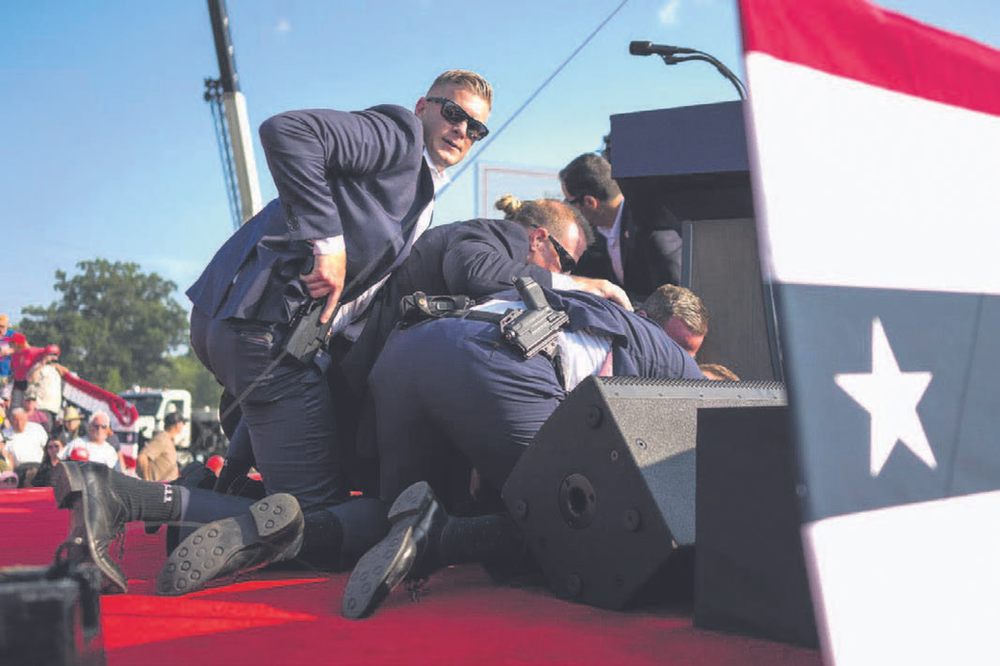
By Luke Broadwater
Earlier this week, the House task force on the attempted assassinations of former President Donald Trump published its first preliminary report, admonishing the Secret Service for subpar planning and a breakdown in communication that culminated in a fatal shooting at Trump’s rally in Butler, Pennsylvania.
“In simple terms, the evidence collected by the task force to this point indicates that the tragic and shocking incidents of July 13 were avoidable and ought not to have occurred,” the report stated.
The 53-page bipartisan report draws on 23 interviews with local law enforcement who assisted with security during the rally, thousands of documents from local, state, and federal agencies, as well as testimony from the task force’s public hearing held on September 26.
Its conclusions largely align with the findings of three other recent inquiries. A Senate investigation revealed that there was no clear leadership for planning and security decisions for the July 13 campaign rally where Trump was shot; an independent review of the shortcomings leading to the assassination attempt urged the Secret Service to overhaul its leadership with individuals from the private sector and focus predominantly on its protective role; and the Secret Service’s own internal review determined that some agents responsible for securing the rally display signs of complacency.
The Secret Service has acknowledged responsibility for these errors and has committed to reforms, including enhanced training, upgraded technology, and proper accountability for agents who neglected their obligations.
The new House report features excerpts from testimonies provided by local law enforcement officials from Butler, Pennsylvania, to the task force. It sheds light on the Secret Service’s insufficient preparation and communication with local law enforcement before and during the July 13 rally, wherein a gunman opened fire, injuring Trump’s ear and causing the death of an attendee.
One officer, a sniper local to the area who was situated in a warehouse next to the one utilized by the would-be assassin, remarked to the panel that the shooter, Thomas Crooks, kept glancing up at the building — specifically at the very window he was in.
“He approached the building to a point where I couldn’t get a view of him,” said the sniper, whose identity was not disclosed in the report. “I found that to be quite suspicious.”
Another officer stationed in the warehouse noted that Crooks was distinctive due to his “complete lack of interest” in the events occurring inside the perimeter where Trump’s supporters were gathered.
Federal, state, and local law enforcement “could have intervened with Thomas Matthew Crooks at multiple critical moments,” as his conduct “grew increasingly suspicious,” the report determined.
The report also included a firsthand account from a Butler police officer who was lifted up by a colleague to look over the edge of the warehouse nearest to Trump’s stage after rally-goers indicated that someone was on the roof.
The officer quickly spotted Crooks.
“I see Crooks turned towards the stage, but he is looking back at me as I’m coming up,” the officer recounted. “I would characterize his facial expression as surprised. His eyes were wide, as though asking, what are you doing here?”
“From that moment, he gradually rotated on his waist, as he was prone, and then slowly turned. As I came up, that’s when he aimed his firearm at my face.”
The officer, who mentioned he was barely holding on, lost his grip and tumbled to the ground. He instantly began shouting into his radio.
“I just kept shouting, ‘He’s armed. He’s got a rifle,’” the officer stated.
The task force mentioned that, as of now, it had not gathered any evidence indicating that the officer’s alert about a firearm reached the Secret Service detail surrounding Trump before Crooks began firing.
The task force confirmed it was still investigating and was in the process of conducting an additional 20 interviews.
